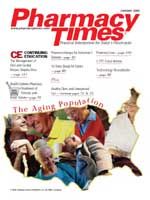Publication
Article
Pharmacy Times
Of White Swans, Bigfoot, and Drug Interactions
"Well, I've observed many patientsreceive that drug combination, andI've never seen any problems with it.Therefore, this is not a clinicallyimportant drug interaction."
Have you ever heard that responseafter you informed a prescriber about apotential drug-drug interaction involvingone of his or her patients? Severalpossibilities may account for thisresponse, of course. It could be that thedrug interaction truly is not clinicallyimportant, and the prescriber is correctto ignore it. Or, it could be that the prescriberis trying to "save face"by minimizingthe importance of the druginteraction. More likely, however, theprescriber is coming to an erroneousconclusion due to inappropriate use ofinductive reasoning.
What Is Inductive Reasoning?
Induction—in the philosophical, notthe metabolic sense—is the process ofcoming to general conclusions fromrepeated observations of a particularevent or thing. Human beings useinductive reasoning on a regular basis.For example, if a person drives down aparticular road at rush hour severaltimes and finds the traffic terrible eachtime, the person concludes that this is agood road to avoid at rush hour.Reaching that conclusion is inductivereasoning, and it is a useful tool for makingmany decisions.
Likewise, the majority of the "truths"in medicine and pharmacy are derivedfrom inductive reasoning. If we as pharmacistsobserve that 90% of thepatients with hyperthyroidism have aparticular symptom, we say that thepresence of this symptom constitutesevidence that supports a diagnosis ofhyperthyroidism. That line of thinkingis inductive reasoning as well.
What Are the Pitfalls ofInductive Reasoning?
Inductive reasoning is useful, but italso can be abused, especially whenpeople use it to come to firm conclusionsbased on a limited number ofobservations. More than 250 years after18th-century Scottish philosopherDavid Hume eloquently and convincinglyexposed the limitations of inductivereasoning, abuse of this methodremains alive and well.
The classic example used to show thepoverty of this approach in achievingcertainty is the experience of Europeanswho—for thousands of years—hadnever seen a swan that was not white.They assumed that all swans werewhite, and they were disabused of thistruism only when black swans were discoveredin Australia. Hume used thisexample to show that no number ofobservations of white swans would belarge enough to allow one to concludewith absolute certainty that all swansare white.
Nevertheless, inductive reasoningcan be useful as a guide to making decisions(as opposed to divining "thetruth") if the number of observations ishigh enough. For example, tens ofthousands of people have hiked in thewoods of the Pacific Northwest withouta single confirmed Bigfoot sighting.With this number of observations, it issafe to conclude that the risk ofencountering Bigfoot is vanishinglysmall—the inductive nature of the conclusionnotwithstanding.
Accordingly, it is quite reasonable tobehave as though Bigfoot does not exist.This belief, however, is nothing close toproof of Bigfoot's nonexistence. Absenceof proof is not proof of absence.
Using Induction for DrugInteractions
So, what do all of these examples haveto do with drug interactions? Most healthprofessionals apply inductive reasoningnaturally and effortlessly when assessingthe potential danger of particular combinationsof drugs. For most clinicallyimportant drug interactions, however,the number of observations made byindividual practitioners is simply not sufficientto make accurate risk assessments.
A good example of this principleinvolves the concurrent use of angiotensin-converting enzyme inhibitors andpotassium-sparing diuretics (HyperkalemiaDue to Drug Interactions,Pharmacy Times, January 2004). Thecombination can contribute to severe orfatal hyperkalemia in certain predisposedpatients, but most people obtain benefitwithout significant adverse outcomes.Most prescribers, therefore, do not seesevere hyperkalemia, and thus they concludethat it is of minimal concern. As aresult, patients continue to be harmed bya preventable adverse drug interaction.
Another way to look at this problemis from a statistical standpoint. For aninteraction that caused a seriousadverse outcome in 1 of 1000 patientsexposed to the combination, onewould have to study 3000 patients inorder to have a 95% chance of observingthe event. Thus, for serious druginteractions that occur rarely, few practitionerswould observe enoughpatients to see the adverse outcome.
Conclusion
Inductive reasoning based on personalclinical experience has serious limitationsas a guide to the clinical importanceof most drug-drug interactions. Itis important, therefore, to consider theresults of published literature in additionto personal clinical experiencewhen making decisions about druginteractions in individual patients.
Drs. Horn and Hansten are both professorsof pharmacy at the University of WashingtonSchool of Pharmacy. For an electronic versionof this article, including references ifany, visit www.hanstenandhorn.com.







